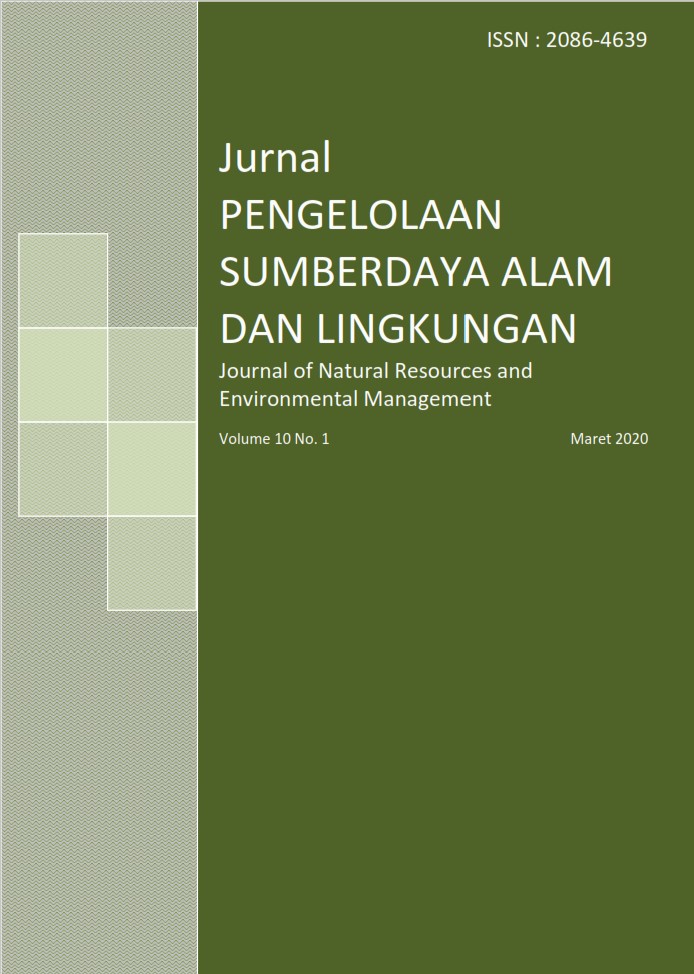Prediction and Correlation Analysis between Water Discharge and Rainfall in Ciliwung River, Bogor City
Abstract
Water demand should be balance with water availability. The population of Bogor City was increased every year, so that water demand become increased. Currently, Government of Bogor City only utilizes the Cisadane river as a source for drinking water, but Bogor City has 2 rivers there are Cisadane river and Ciliwung river. So, Ciliwung river can be solution for this problem. Water discharge and rainfall influence water availability. Distribution log pearson type 3 used to predict the water discharge and rainfall and linier regression analyzed the relationship between water discharge (dependent variable) with rainfall as X1 and water level as X2 (independent variable). The result of distribution log pearson type 3 every return period 2, 5, 10, 25, dan 50 years is water discharge and rainfall were increased. Average increase of water discharge every return period is 1.6 m3/s and average increase of rainfall every return period is 251 mm. Partially, water discharge influenced by water level 97.7% and 2% by rainfall. But, = 0.000 < = 0.05. it is mean rainfall and water level cannot be ignored because it can influence water discharge with regression model = -3.01 + 0.000 X1 + 0.202 X2.
References
[BPS] Badan Pusat Statistik Kota Bogor. 2015. Kota Bogor dalam angka. Bogor
[Bappenas] Badan Perencanaan Nasional. 2013. Laporan pencapaian tujuan pembangunan milinium di Indonesia 2011. Jakarta. [terhubung berkala]. http://bappenas.go.id [19 mei 2017].
[BPLHD] Badan Pengelolaan Lingkungan Hidup DKI Jakarta. 2014. Laporan pelaksanaan kualitas sungai. Kementerian Lingkungan Hidup dan Kehutanan. Jakarta.
Edy Junaidi., Surya Dharma Tarigan. 2011. Pengaruh hutan dalam pengaturan tata air dan proses sedimentasi daerah aliran sungai (das) : studi kasus di das cisadane. J. Penelitian Hutan dan Konservasi Alam. Vol. 8 No. 2, pp. 155-176
Herrera, M., Torgo, L., Izquierdo, J., Pe rez-Garcia, R., 2010. Predictive models for forecasting hourly urban water demand. J. Hydrol. 387, pp. 141-150.
Günther, I., Günther, F., 2011. Water and sanitation to reduce child mortality: the impact and cost of water and sanitation infrastructure. Policy Research Working Paper 5618. The World Bank, Development Economics Prospects Group. [terhubung berkala]. https://openknowledge.worldbank.org [19 mei 2017].
Mitrică, B., Mocanu, I., 2011. Drinking water supply and consumption territorial disparities in the timiş plain. Anal. Univ. Oradea Ser. Geogr. XXI (2), pp. 239-247.
Qilin, L., Dueñas-Osorio, L., Raciny, I., 2009. Sustainable water infrastructure for improving public health protection. A look at centralized, decentralized and hybrid water systems. [terhubung berkala]. http://shellcenter.rice.edu/Content.aspx?id=59 [19 mei 2017].
Authors
Authors who publish with this journal agree to the following terms:
- Authors retain copyright and grant the journal right of first publication with the work simultaneously licensed under a Creative Commons Attribution License that allows others to share the work with an acknowledgement of the work's authorship and initial publication in this journal.
- Authors are able to enter into separate, additional contractual arrangements for the non-exclusive distribution of the journal's published version of the work (e.g., post it to an institutional repository or publish it in a book), with an acknowledgement of its initial publication in this journal.
- Authors are permitted and encouraged to post their work online (e.g., in institutional repositories or on their website) prior to and during the submission process, as it can lead to productive exchanges, as well as earlier and greater citation of published work (See The Effect of Open Access).
Article Details
10.1088/1755-1315/1263/1/012034
10.29303/spektrum.v11i2.354
10.29244/jpsl.14.1.101-108
10.18280/ijsdp.190816
10.22146/ijg.97621






